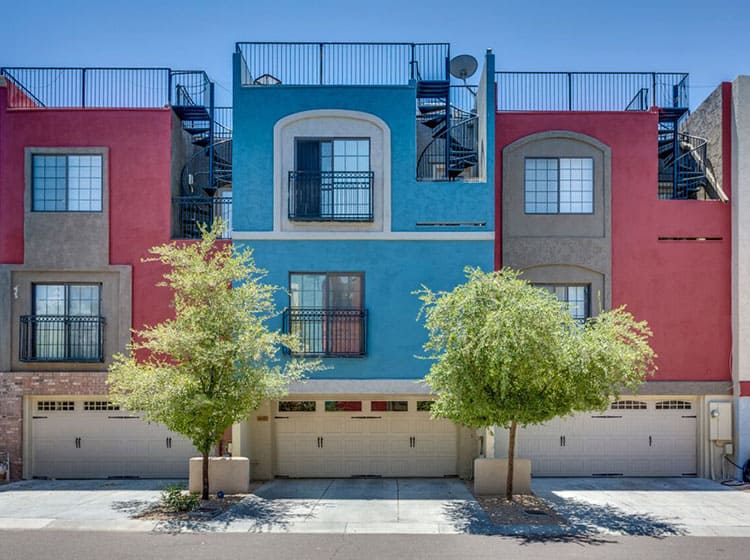Set Your Wall Surfaces Up For Painting With Essential Ideas And Techniques That Assure A Flawless Finish-- Learn The Essential Steps To Progress Your Job
Set Your Wall Surfaces Up For Painting With Essential Ideas And Techniques That Assure A Flawless Finish-- Learn The Essential Steps To Progress Your Job
Blog Article
Web Content Composed By-Soelberg Balslev
When you're prepping your wall surfaces for painting, it's crucial to adhere to a systematic procedure to guarantee a flawless coating. Beginning by examining the wall surface for any damage; this action can make or damage your project. As soon as you've recognized any kind of problems, cleaning the surface properly is essential, as a dirty wall surface can affect paint bond. After that, you'll need to patch any kind of flaws and use a guide. However there specify methods and tips that can raise your prep work game-- let's discover those more to achieve the most effective outcomes.
Assessing Wall Problem
Before you order your paintbrush, take a minute to evaluate your walls' condition. Look for any visible damages like cracks, holes, or peeling paint. These blemishes can influence exactly how the paint adheres and looks as soon as it's dry. If you observe any substantial damage, you'll require to focus on fixings before diving right into paint.
Look very closely at the structure of your walls. Is the surface area smooth, or exists appearance that might require unique factor to consider? Smooth walls normally call for much less preparation, while textured surfaces may require more time to paint evenly.
Additionally, consider the previous paint task. If the old paint is shiny, it mightn't enable new paint to stick properly. You'll would like to know if your walls have actually been repainted with oil-based or water-based paint, as this can influence your choice of guide or paint.
Ultimately, bear in mind of any moisture concerns. If you see indicators of water damage or mold, address these issues quickly to prevent more issues.
Cleaning the Surface area
When you've analyzed the condition of your wall surfaces, the following step is cleansing the surface. Begin by collecting your products: a bucket, warm water, a mild detergent, a sponge or fabric, and a scrub brush for tougher areas.
Begin on top corner of the wall and work your means down. Mix the detergent with warm water in your container, after that dip the sponge or fabric right into the service. Wring it bent on prevent too much wetness on the walls.
As you clean up, pay very close attention to locations that may've built up dirt, oil, or fingerprints. For persistent stains, utilize the scrub brush gently to prevent damaging the paint underneath. Rinse your sponge or cloth regularly in clean water to prevent spreading out dirt around.
After cleansing, it's essential to wipe the wall surfaces with a wet towel to eliminate any kind of soap residue. This action guarantees a smooth surface for the brand-new paint to adhere to.
Permit the wall surfaces to dry entirely prior to carrying on to the following prep work actions. This detailed cleansing procedure will certainly help develop a fresh canvas for your painting task, guaranteeing the best results.
Patching and Priming
Patching and priming are important action in preparing your wall surfaces for a fresh coat of paint. First, check your walls for any kind of openings, splits, or imperfections. Make use of a top notch spackling substance or patching paste to fill these locations.
Use interior painting happy valley with a putty knife, smoothing it out so it's flush with the bordering surface area. Allow it to completely dry entirely, and afterwards sand it gently till it's smooth and even.
Once you have actually patched whatever, it's time to prime. Guide assists secure the covered areas, making certain the paint adheres effectively and gives an uniform coating. Select a knockout post for your wall surface kind and the paint you'll be using.
Use the primer using a roller for larger areas and a brush for corners and edges. If your covered areas are substantially huge or permeable, you might want to apply a second layer of guide after the very first one dries.
After priming, allowed whatever dry thoroughly before carrying on to painting. This prep work won't only enhance the appearance of your wall surfaces yet also extend the life of your paint job.
Take your time, and you'll be pleased with the results.
Conclusion
By complying with these easy steps, you can accomplish a smooth and specialist finish on your wall surfaces. Beginning by assessing their problem, after that clean and spot any imperfections before using guide. Remember to allow sufficient drying time and ensure whatever is smooth before you study painting. With the right preparation, you'll establish the stage for a lovely change in your area. Now, gather your products, breathe in the fresh air, and prepare yourself to repaint!
